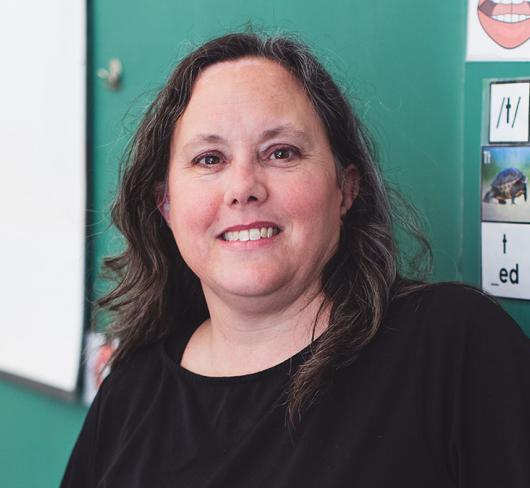
Prioritizing the Wages and Working Conditions of Early Childhood Educators
Last to the party among all provinces and territories, Ontario signed onto the Canada- wide Early Learning and Child Care Agreement (CWELCC) on March 28, 2022.
Despite the long wait and suggestions by the Ford government that the province would negotiate a unique deal, Queen’s Park received no special treatment. The $13.2 billion announced will be distributed over six years – instead of five – in the same proportion as allocated to other jurisdictions.
As with all child care agreements signed with the federal government, Ontario promises to bring parent fees down to an average of $10 a day over the life of the agreement, while increasing child care capacity by an additional 71,000 spaces.
When added to the existing 285,962 spaces serving those under six years old, there will be sufficient coverage for 43 percent of children. Experts say that number is far below the 200,000 to 300,000 additional spaces that will be needed to meet demand as parent fees decline.
Yet even the province’s modest expansion goals will be curtailed by a shortage of Early Childhood Educators (ECEs). Low wages and poor working conditions, further strained by the COVID-19 pandemic, create problems finding and retaining qualified staff. This could leave newly built classrooms sitting empty.
Long Wait for a Deal
COVID-19 accelerated government and public appreciation for the critical role of child care. The federal government’s historic $27 billion investment in early learning and child care and the subsequent associated agreements marked the shift.
But Ontario’s deal discounts the integral role of educators. Negotiators pledged to increase the portion of qualified ECEs working in child care centres to 60 percent from the current 55. The deal also establishes a minimum wage of $18 an hour for trained staff, rising by $1 each year to an hourly maximum of $22 by 2026 and $25 per hour for centre supervisors.
The proposed wage floor is below the current $20 hourly median for ECEs and assistants across Canada. Over 75 percent of staff working in Ontario child care are not covered by the agreement.
Among Lowest-Paid Sectors
The early learning and care workforce is feminized and racialized. It’s among the lowest-paid sectors even compared to other female-dominated jobs requiring similar education and experience.
When compared to male professions with similar training requirements, the wage gap is even more staggering and shows how educating and caring for young children is deeply gendered and devalued.
In Ontario, only 55 percent of ECEs registered with the College of Early Childhood Educators work in child care, and as many as a third of positions requiring ECE credentials are filled with untrained personnel.
These challenges predate COVID-19 but were accelerated by it. Employment in child care dropped 21 percent during the pandemic compared to three percent among all other sectors.
When COVID-19 struck, ECEs were called to the front lines to provide round-the-clock care for the children of emergency workers. Yet support for them was slow to come. They were among the last on the priority list for pandemic bonuses, protective equipment and vaccinations.
An online briefing the government provided the day after the deal was announced left educators questioning why, despite the federal windfall, there is no real recognition of their sacrifice. Meanwhile, in other parts of the country, governments are committed to improving wages and benefits and offering pensions. Manitoba embedded educator compensation in its agreement with Ottawa, offering a minimum wage of $25.89 and starting rate for qualified educators of $27.77. In April 2021, Yukon raised its hourly starting minimum for ECEs to $30.11. Saskatchewan made a good faith down payment of $3 an hour for all its staff, while educators in New Brunswick received a $11.77 an hour boost, putting them well ahead of what their Ontario counterparts will earn in five years.
With the largest share of the country’s youngest children, Ontario’s access targets are the least ambitious among the provinces, creating only one new space for every 12 children under six years of age. Meanwhile Saskatchewan is developing a new space for every three children. In Newfoundland, it’s one in four, and in Alberta, it’s one in eight.
Still, Ontario will need another 9,000 ECEs, plus assistants, to staff new classrooms. As the least generous supporter of its workforce, the province won’t achieve these goals unless it gets serious about compensation.
Changing the Child Care Discourse
Much of the government’s conversation about growing the numbers of ECEs relies on adding more seats in college programs. But young workers are in demand everywhere – they won’t choose a career in child care without substantial improvements.
The Organization for Economic Co-operation and Development reports that good working conditions are strong incentives for early childhood educators to enter and stay in the child care profession. And better working conditions are associated with higher quality early childhood education programs, leading to better outcomes for children.
Ontario’s signing onto a national child care system is an unprecedented opportunity to change the perceptions of the public and policy makers. Central to this change is replacing the idea that child care is a service so parents can work with a recognition that early childhood education holds enormous potential for positive social change.
However, this promise cannot be realized without a concerted strategy to solve the ongoing crisis of recruitment and retention of qualified ECEs and without viewing this issue as related to women’s equality.
Our report on the child care workforce argues that maintaining a professional workforce requires a package of interventions to produce inviting jobs. This will take a far more activist role by regional governments. The Ministry of Education released an update to its management and funding guidelines for children’s service managers giving them major responsibilities for the design and oversight of the new child care agreement plan. With the ability to determine the reasonableness of management salaries and other operating costs, service managers can influence who signs onto the new plan.
Excluded however are school-operated, extended-hour programs for Kindergarten aged children. Barring programs within the K-12 school system from the provisions of the CWELCC plan is a federal condition with major negative consequences. Ontario school boards are responsible for providing out-of-school care for children in Kindergarten to age 12 where there is sufficient parent demand. More boards have taken on direct program delivery because so many community operators shut down due to staff shortages. School boards are among the public operators offering ECEs decent compensation and working conditions, setting a bar for pay and benefits in the sector. If parents using board-operated child care are excluded from the promised fee reductions, they will look elsewhere. The decade-plus effort that has gone into creating an integrated continuum of learning for children from their earliest years into formal schooling will be undermined.
The following documents today’s child care challenges and what needs to quickly change.
Compensation
Half the Ontario child care workforce barely earns above the minimum wage. Low wages result in a chronic shortage of qualified ECEs and vacancies are filled with unqualified staff. Inadequate compensation contributes to poverty among educators. Enrolment challenges in programs brought on by the pandemic resulted in layoffs and unpredictable hours, leading ECEs to leave the sector to work elsewhere where they earn more.
Evaluating educators’ work using pay equity tied to comparable jobs in the public sector would place child care workers on par with their public counterparts. Recruitment and retention challenges aren’t seen in publicly-operated child care centres where educators are paid substantially more, are unionized and have access to professional development and career opportunities.
Paid leave and decent health and pension benefits are essential components of compensation. One-third of the child care workforce receives no health benefits, and only 17.7 percent have access to employer-paid RRSPs or pensions. Over 50 percent of educators report access to benefits as a reason for staying with their current employer. Governments can include educators in their existing public pension and benefits plans.
Professionalism
Ontario requires only one in three staff working in licensed child care to hold a two-year college credential in early childhood education, even though research suggests that when ECEs hold a bachelor’s degree, they are more likely to provide high-quality pedagogy take up leadership roles and commit to the field long-term. Professionalization of the child care sector must occur through setting higher educational requirements for the field through initial training and ongoing professional development.
Working Conditions
Better working conditions are not only a matter of quality, but also of equality. Empowering educators to support children to develop into their optimal selves requires expertise and resources.
Educators’ knowledge of child development – paired with their relationships with children at a critical window in children’s lives – means educators can identify child or family challenges and propose interventions or refer families to specialist services.
To successfully accomplish this, educators need time to keep their skills current and access to professional mentorship and specialists who can help support children and families with greater needs.
Effective Leadership
Professional working conditions and the overall quality of a program depend on the leaders at the helm. However, Ontario, like most provinces and territories, requires no additional training for centre directors. Leading a child care centre is complex, requiring proficiencies in financial literacy, human resource management and educational leadership. Increasing training requirements for program directors will contribute to the quality of care.
Educators’ work environments are children’s learning environments. Children depend on educators who are skilled and knowledgeable. Just as children’s environments can support or impede their learning, educators’ work environments can promote or hinder their ability to do their work well.
Decent work for the child care workforce should be more than just a slogan; it must be the foundation of Ontario’s early learning and child care plan to ensure that children receive the high-quality care they deserve.
Emis Akbari is a Professor and Program Coordinator at the School of Early Childhood at George Brown College, Adjunct Professor, Department of Applied Psychology and Human Development at Ontario Institute for the Study of Education (OISE) and Senior Policy Fellow at the Atkinson Centre, University of Toronto.
Kerry McCuaig is a Fellow in Early Childhood Policy at the Atkinson Centre, Ontario Institute for Studies in Education, University of Toronto.
For more information visit ecereport.ca/en/workforce-report/

